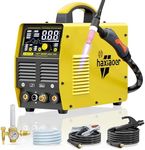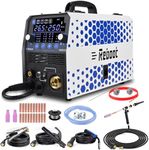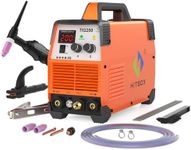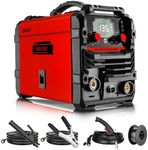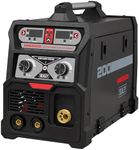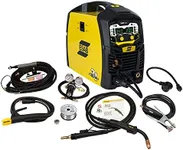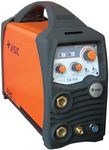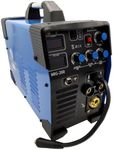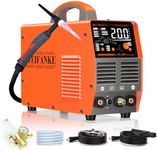Buying Guide for the Best Tig Welders
Choosing the right TIG welder can be a daunting task, especially if you're new to welding or looking to upgrade your equipment. TIG welding, or Tungsten Inert Gas welding, is known for its precision and ability to weld thin materials. To make an informed decision, it's important to understand the key specifications and how they relate to your specific needs. Here are the main specs to consider when selecting a TIG welder.Amperage RangeAmperage range refers to the range of electrical current the welder can produce. This is crucial because different materials and thicknesses require different amperage levels. For thin materials like aluminum or stainless steel, a lower amperage (around 5-20 amps) is ideal, while thicker materials like steel may require higher amperage (up to 200 amps or more). Consider the types of projects you'll be working on and choose a welder with an amperage range that suits those needs.
AC/DC CapabilityAC/DC capability indicates whether the welder can operate on alternating current (AC) or direct current (DC). AC is typically used for welding aluminum, while DC is used for welding steel and stainless steel. If you plan to work with a variety of metals, a welder with both AC and DC capabilities will offer greater versatility. Assess the types of materials you'll be welding to determine if you need a welder with both AC and DC options.
Duty CycleThe duty cycle is the amount of time a welder can operate continuously before needing to cool down. It is usually expressed as a percentage over a 10-minute period. For example, a 60% duty cycle at 100 amps means the welder can run for 6 minutes at 100 amps before requiring a 4-minute rest. If you plan on doing long welding sessions, a higher duty cycle is beneficial. Consider the length and intensity of your welding projects to choose a welder with an appropriate duty cycle.
PortabilityPortability refers to the ease with which you can move the welder around. This is important if you need to transport your welder to different job sites or if you have limited space in your workshop. Portable welders are typically lighter and more compact, but may have fewer features compared to larger, stationary models. Think about where you'll be using the welder and how often you'll need to move it to determine the right level of portability for you.
Foot Pedal ControlFoot pedal control allows you to adjust the amperage while welding, giving you greater precision and control over the weld. This is particularly useful for intricate work and when welding thin materials. If you need fine control over your welding process, look for a welder that includes or is compatible with a foot pedal. Consider the complexity of your projects and whether this feature will enhance your welding experience.
High-Frequency StartHigh-frequency start is a feature that helps initiate the arc without the need for physical contact between the tungsten electrode and the workpiece. This results in cleaner starts and reduces contamination of the weld. If you require precise and clean welds, especially on delicate materials, a high-frequency start is beneficial. Evaluate the quality and precision required for your projects to decide if this feature is necessary.
Cooling SystemThe cooling system in a TIG welder helps prevent overheating and prolongs the life of the machine. Welders can have air-cooled or water-cooled systems. Water-cooled systems are more efficient and suitable for high-amperage, long-duration welding, while air-cooled systems are simpler and adequate for lower-amperage, shorter-duration tasks. Consider the intensity and duration of your welding projects to choose the appropriate cooling system.
